Study of a Tailings Dam Failure Pattern and Post-Failure Effects under Flooding Conditions
Abstract
:1. Introduction
1.1. Research Status
1.2. Research Flowchart
2. Design and Construction of Large Physical Models
2.1. Overview of the Prototype Tailings Dam
2.2. Selection of Model Sand
2.3. Construction of the Dam Failure Model
3. Tailings Dam Break Model Experiment
3.1. Dam Failure Experiment
3.2. The Change Rule of the Saturation Line
4. Impact Analysis after Dam Break and Prevention Suggestions
4.1. Dam Failure Test Results
4.1.1. Overflow Area
4.1.2. Flooding Depth
4.1.3. Flow Rate Analysis
4.2. Recommendations for Prevention and Management
4.2.1. Technical Measures
4.2.2. Management Measures
5. Conclusions
- (1)
- The reservoir’s water level had not yet crested before the dam was damaged. In other words, the cause of dam failure under flood conditions is seepage failure, which manifests itself in the form of flowing soil. Before the flow soil is destroyed, the dam surface will produce overflow, water accumulation, sand boiling, and other phenomena. The phenomenon of the dam failure test shows that the flow soil damage starts at the weak point of the dam at the junction with the bedrock. These areas have a high saturation gradient and are more prone to local damage. In the early stage of soil flow failure, multiple sand boiling points were generated on the dam surface. With the development of seepage, collapsible cracks appeared on the dam surface one after another, forming erosion ditches. In the middle stage of soil failure, the failure area is widened. The soil cycle undergoes the process of erosion–gravity erosion, and the ‘filter layer’ will slow down the failure rate to a certain extent. In the later stage of flow soil damage, the flow water damage area began to penetrate, and the erosion intensified until the whole dam body was damaged. Therefore, when the sand boiling point is generated, and the collapsible cracks appear on the dam surface, these can be used as a warning sign of seepage failure.
- (2)
- The buried depth of the saturation line becomes shallow with the increase in the upstream water head. And, the rate of increase is first fast and then slow. After the lifting head is stopped, the saturation line will still rise slightly for a period of time due to the lag effect. If the reservoir water level is not replenished for a long time, the saturation line will be reduced under normal drainage. The order of the saturation line escaping from the dam surface is the second sub-dam, the third sub-dam, the first sub-dam, and the fourth sub-dam. It can be seen that before the flood, it is necessary to check and repair the drainage facilities to ensure their suitable operation. During the flood season, all measures should be taken to enhance the flood discharge, reduce the saturation line, and avoid the seepage damage of the tailings dam.
- (3)
- The results of the FLOW-3D hydrodynamic simulation software show that the breach fluid was rapidly discharged within a short period, covering the entire flat area downstream by 300 s. The local farmland and roads were submerged, and the rest of the construction facilities were also damaged to a certain extent. Therefore, it will be a major disaster once the tailings dam breaks. The rapid development of the dam breach mudslide and the short release time make it impractical to organize the evacuation of people when the release occurs. Therefore, in combination with the mechanism of tailings dam failure, targeted measures for potential remediation and dam failure prevention can be proposed from both technical and management aspects.
- (4)
- The innovation point is to use a large-scale physical model test to study the dam break mode of tailings dam under flood conditions. By monitoring the internal changes of the tailings reservoir under flood conditions, the stage of seepage failure of the dam body can be judged, which can serve as an early warning for the subsequent break of the tailings dam. The experimental process and experimental results of the model can provide a reference for the changes in tailings reservoir under flood conditions under real working conditions so as to correspond to the changes of tailings reservoir fluid under flood conditions under real working conditions. Provide guidance for staff to monitor changes in tailings ponds. The determination of dam break position and dam break mode by model test provides a basis for simulating the influence of tailings dam break on the downstream. The use of a steel frame structure to build a tailings dam model can cover the entire tailings dam terrain more comprehensively and economically and can more comprehensively analyze the entire dam break process of the tailings dam. Compared with the local tailings dam similarity simulation and on-site exploration, it is more profound and comprehensive, which has practical significance for the safety of the tailings reservoir. The defect is that there is a prototype of the model, and it cannot be used for all tailings mines. The actual situation needs to be analyzed in detail. In addition, according to the tailings pond model test, it can be expected that the tailings pond model can be used to study the useful mineral components in the recovery reservoir, which has practical significance for environmental protection and resource recovery.
Author Contributions
Funding
Data Availability Statement
Conflicts of Interest
References
- Yue, T.; Wu, X. Effect of magnetic starch on the clarification of hematite tailings wastewater. IOP Conf. Ser. Earth Environ. Sci. 2018, 121, 032051. [Google Scholar] [CrossRef]
- Jin, W.; Wei, Z. Research progress on land reclamation and environmental management benefit estimation of non-ferrous metal tailings reservoir. Environ. Sci. Res. 2019, 8, 1304–1313. (In Chinese) [Google Scholar]
- Kang, Z.; Han, Q.; Wang, S. umerical model of dynamic stability of a proposed tailings dam To be studied. Min. Res. Dev. 2015, 35, 59–62. [Google Scholar]
- Zhou, K.; Liu, F.; Hu, J.; Gao, F. Research on dam-break disaster chain and chain-breaking disaster reduction control technology of tailings reservoir. Disasterology 2013, 28, 24–29. (In Chinese) [Google Scholar]
- Chen, C.; Zhao, Y.; Jiang, L. Review on the current research of dam break of tailings pond. Min. Res. Dev. 2019, 39, 103–108. (In Chinese) [Google Scholar]
- Zhou, Z.; Li, X. Causes and ecological environment impact assessment of tailings dam break accident in China. Met. Mine 2012, 11, 121–124. (In Chinese) [Google Scholar]
- Zhou, L.; Huang, Y. Discussion on the causes and countermeasures of tailings reservoir accident. China Manganese Ind. 2016, 34, 37–39. (In Chinese) [Google Scholar]
- Yang, M.; Song, Z. A tailings reservoir based on flood calculation and flood routing analysis. China Met. Bull. 2020, 5, 263–264. (In Chinese) [Google Scholar]
- Zhang, X.; Song, Z.; Zhang, Z. Example analysis of a tailings pond flooded with a dam failure. Eng. Constr. 2020, 52, 44–48. (In Chinese) [Google Scholar]
- Zhang, C.; Chai, J.; Cao, J.; Xu, Z.; Qin, Y.; Lv, Z. Numerical simulation of seepage and stability of tailings dams: A case study in Lixi, China. Water 2020, 12, 742. [Google Scholar] [CrossRef]
- Sánchez-Peralta, J.A.; Beltrán-Rodríguez, L.N.; Trujillo-Vela, M.G.; Larrahondo, J.M. Flows of liquefied filtered tailings: Laboratory-scale physical and numerical modeling. Int. J. Civ. Eng. 2020, 18, 393–404. [Google Scholar] [CrossRef]
- Du, C.; Liang, L.; Yi, F.; Niu, B. Effects of geosynthetic reinforcement on tailings accumulation dams. Water 2021, 13, 2986. [Google Scholar] [CrossRef]
- Petkovšek, G.; Hassan, M.A.A.M.; Lumbroso, D.; Roca, M. A two-fluid simulation of tailings dam breaching. Mine Water Environ. 2021, 40, 151–165. [Google Scholar] [CrossRef]
- Geng, W.; Wang, W.; Wei, Z.; Huang, G.; Jing, X.; Jiang, C.; Tian, S. Experimental study of mesostructure deformation characteristics of unsaturated tailings with different moisture content. Water 2021, 13, 15. [Google Scholar] [CrossRef]
- Lolaev, A.; Oganesyan, A.; Badoev, A.; Oganesyan, E. Tailing dams formation algorithm. Arab. J. Geosci. 2020, 13, 974. [Google Scholar] [CrossRef]
- Wang, K.; Yang, P.; Yu, G.; Yang, C.; Zhu, L. 3D numerical modelling of tailings dam breach run out flow over complex terrain: A multidisciplinary procedure. Water 2020, 12, 2538. [Google Scholar] [CrossRef]
- Kansoh, R.M.; Elkholy, M.; Abo-Zaid, G. Effect of shape parameters on failure of earthen embankment due to overtopping. KSCE J. Civ. Eng. 2020, 24, 1476–1485. [Google Scholar] [CrossRef]
- Liu, K.; Cai, H.; Jing, X.; Chen, Y.; Li, L.; Wu, S.; Wang, W. Study on hydraulic incipient motion model of reinforced tailings. Water 2021, 13, 2033. [Google Scholar] [CrossRef]
- Piciullo, L.; Storrøsten, E.B.; Liu, Z.; Nadim, F.; Lacasse, S. A new look at the statistics of tailings dam failures. Eng. Geol. 2022, 303, 106–657. [Google Scholar] [CrossRef]
- Ma, C.; Gao, Z.; Yang, J.; Cheng, L.; Chen, L. Operation performance and seepage flow of impervious body in blast-fill dams using discrete element method and measured data. Water 2022, 14, 1443. [Google Scholar] [CrossRef]
- Fukumoto, Y.; Ohtsuka, S. 3-D direct numerical model for failure of non-cohesive granular soils with upward seepage flow. Comput. Part. Mech. 2018, 5, 443–454. [Google Scholar] [CrossRef]
- Issakhov, A.; Borsikbayeva, A. The impact of a multilevel protection column on the propagation of a water wave and pressure distribution during a dam break: Numerical simulation. J. Hydrol. 2021, 598, 126–212. [Google Scholar] [CrossRef]
- Dibike, Y.B.; Shakibaeinia, A.; Droppo, I.G.; Caron, E. Modeling the potential effects of Oil-Sands tailings pond breach on the water and sediment quality of the Lower Athabasca River. Sci. Total Environ. 2018, 642, 1263–1281. [Google Scholar] [CrossRef] [PubMed]
- Jing, X.; Chen, Y.; Williams, D.J.; Serna, M.L.; Zheng, H. Overtopping failure of a reinforced tailings dam: Laboratory investigation and forecasting model of dam failure. Water 2019, 11, 315. [Google Scholar] [CrossRef]
- Mahdi, A.; Shakibaeinia, A.; Dibike, B.Y. Numerical modelling of oil-sands tailings dam breach runout and overland flow. Sci. Total Environ. 2020, 703, 134–568. [Google Scholar] [CrossRef] [PubMed]
- Naeini, M.; Akhtarpour, A. Numerical analysis of seismic stability of a high centerline tailings dam. Soil Dyn. Earthq. Eng. 2018, 107, 179–194. [Google Scholar] [CrossRef]
- Boroomand, M.R.; Mohammadi, A. Evaluation of earth dam leakage considering the uncertainty in soil hydraulic parameters. Civ. Eng. J. 2019, 5, 1543–1556. [Google Scholar] [CrossRef]
- Li, S.; Yuan, L.; Yang, H.; An, H.; Wang, G. Tailings dam safety monitoring and early warning based on spatial evolution process of mud-sand flow. Saf. Sci. 2020, 124, 104–579. [Google Scholar] [CrossRef]
- Kong, X.; Liu, Y.; Li, X.; Li, R.; He, Y. Analysis and experimental study of mechanical factors of permeation damage of a uranium tailings pond dam. Eng. Saf. Environ. Prot. 2019, 45, 30–36. (In Chinese) [Google Scholar]
- He, W.; Chen, H.; Zheng, C. Experimental study on dam break of a tailings dam under flood conditions. J. Saf. Environ. 2022, 22, 3126–3134. (In Chinese) [Google Scholar]
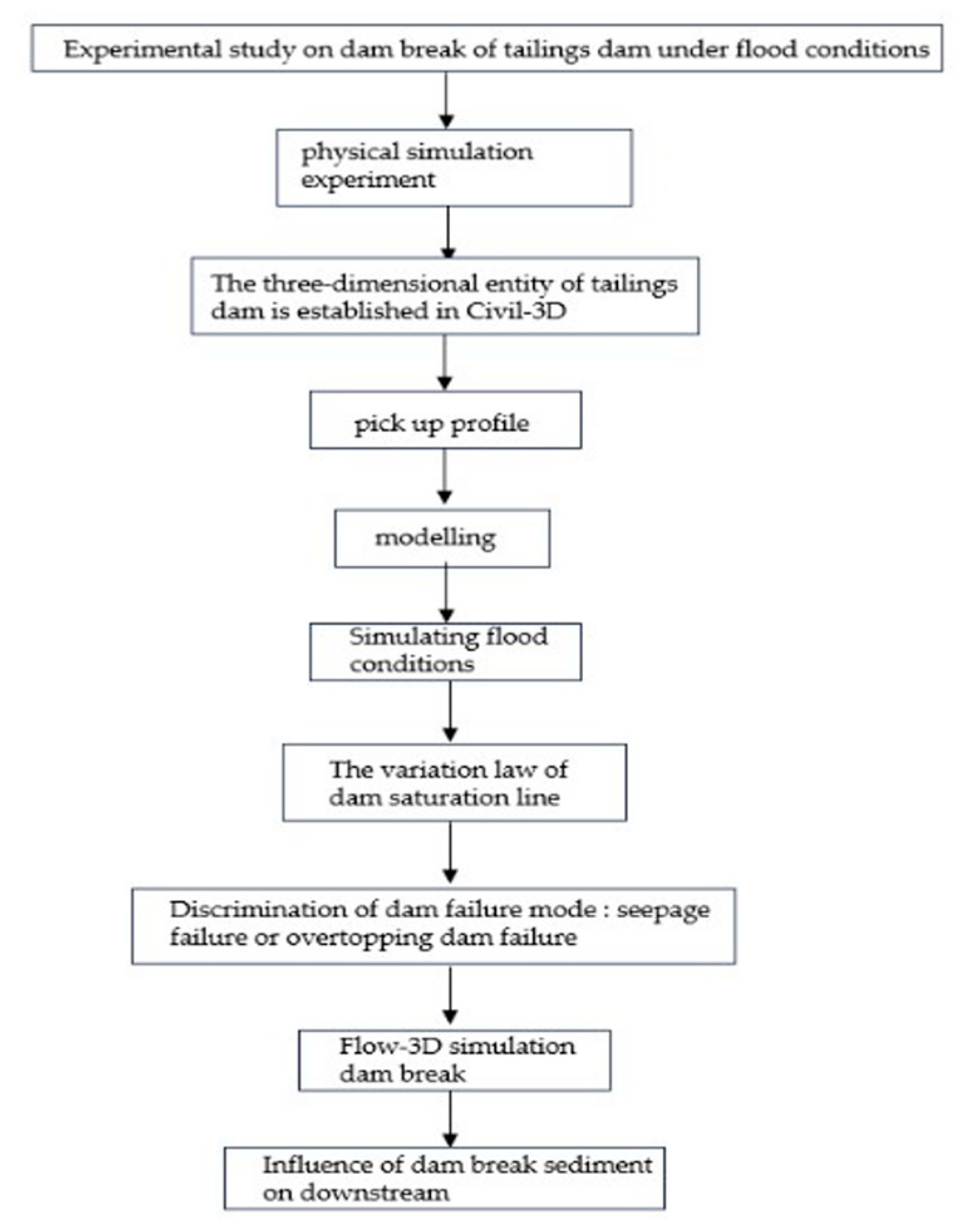
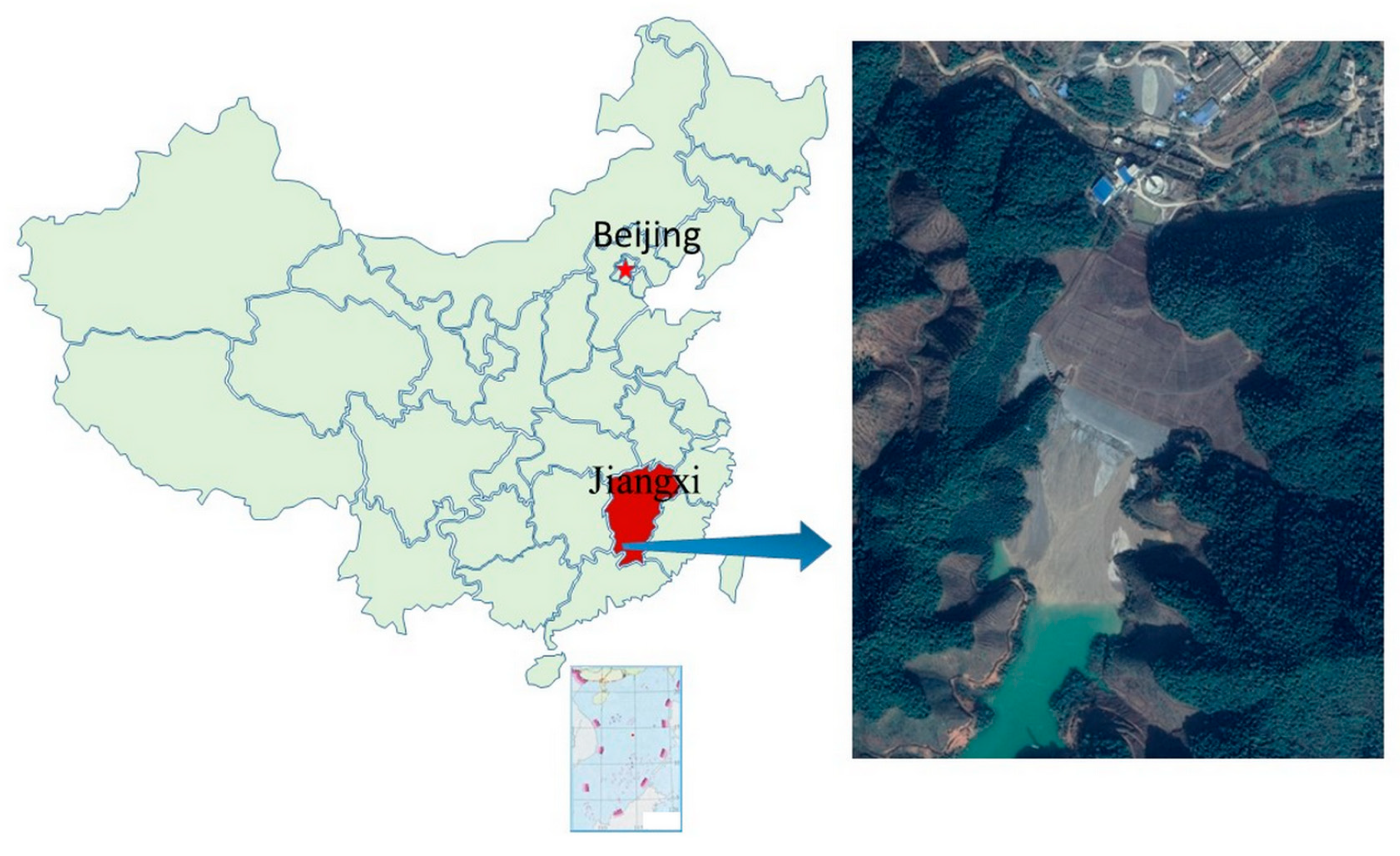
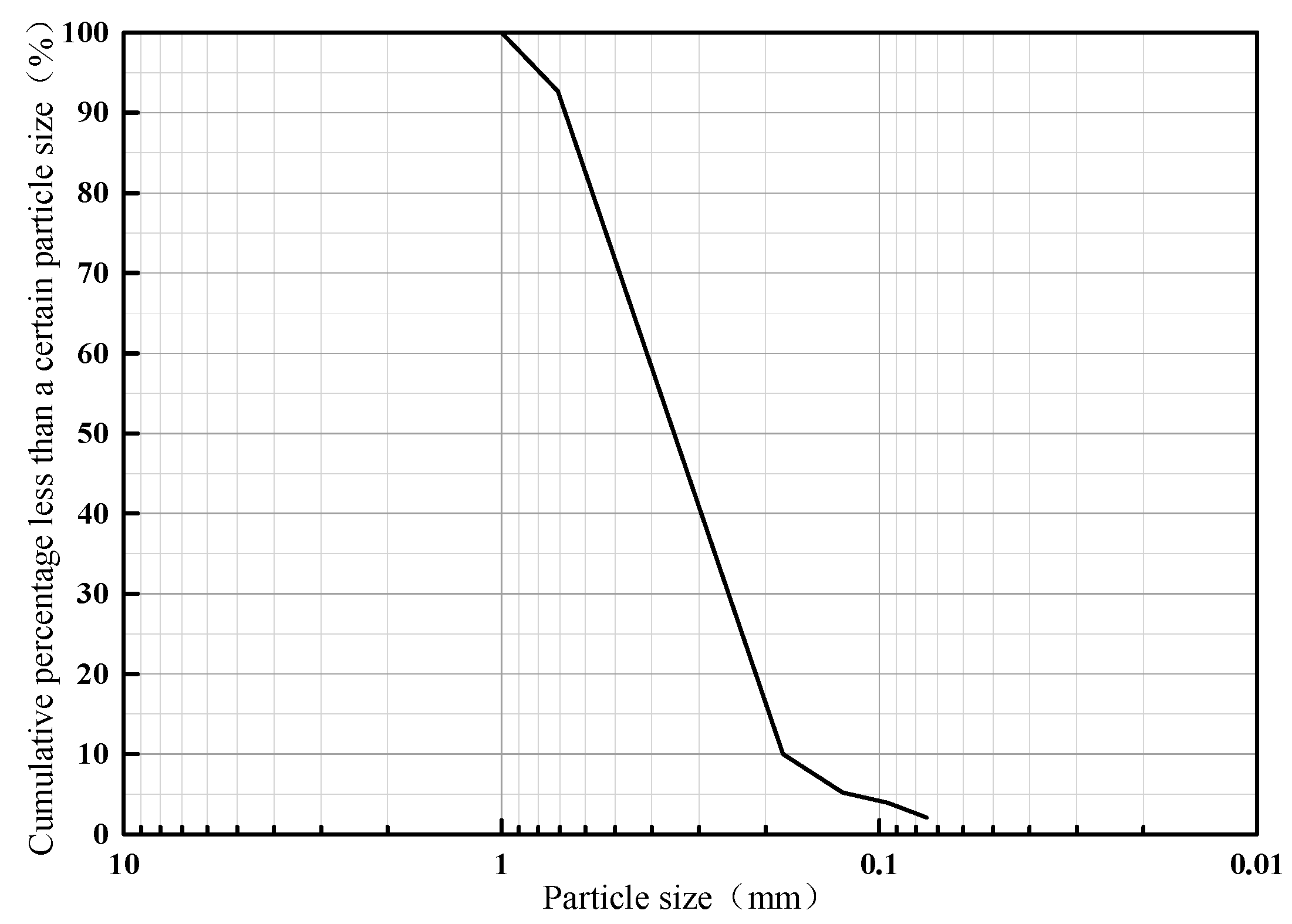

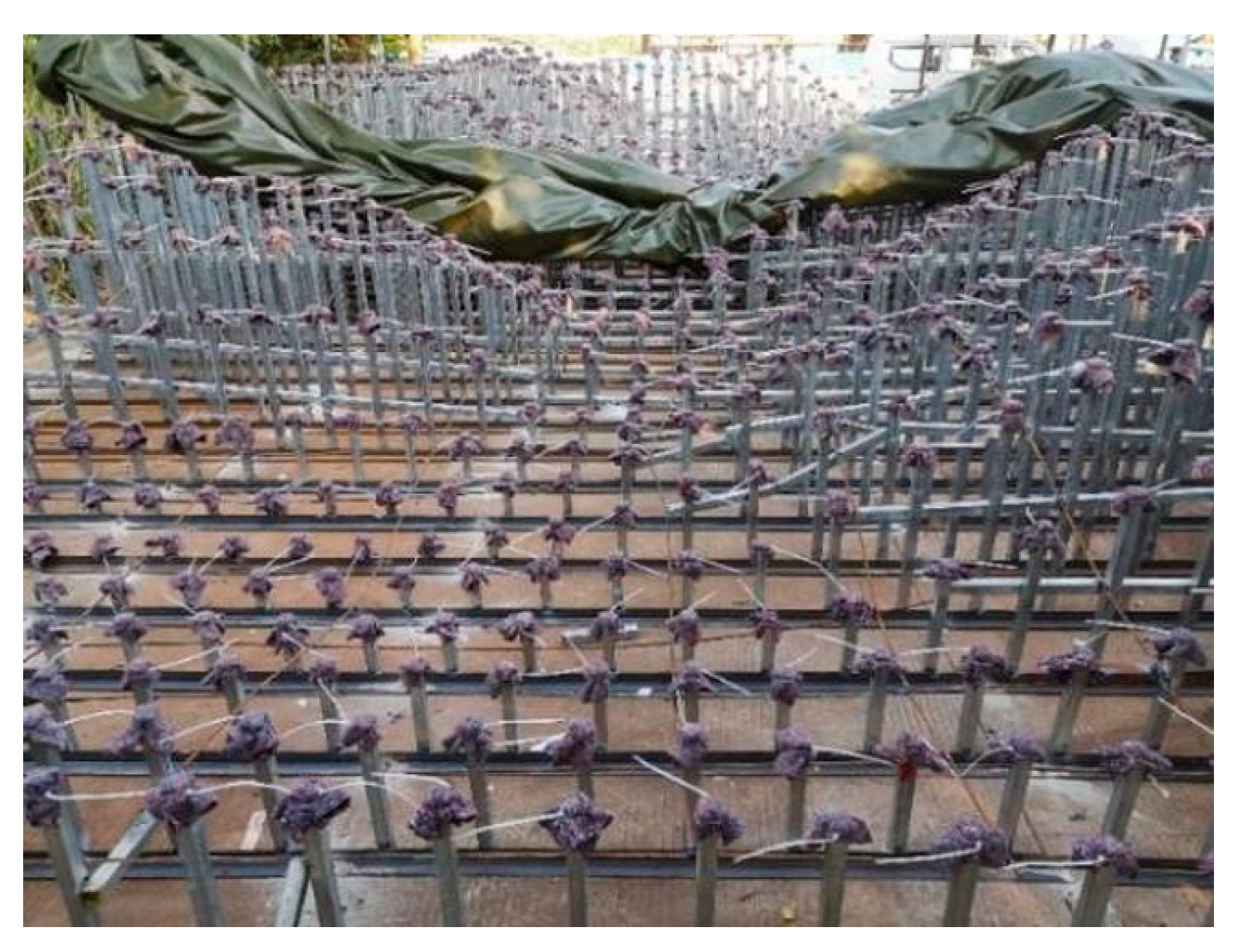
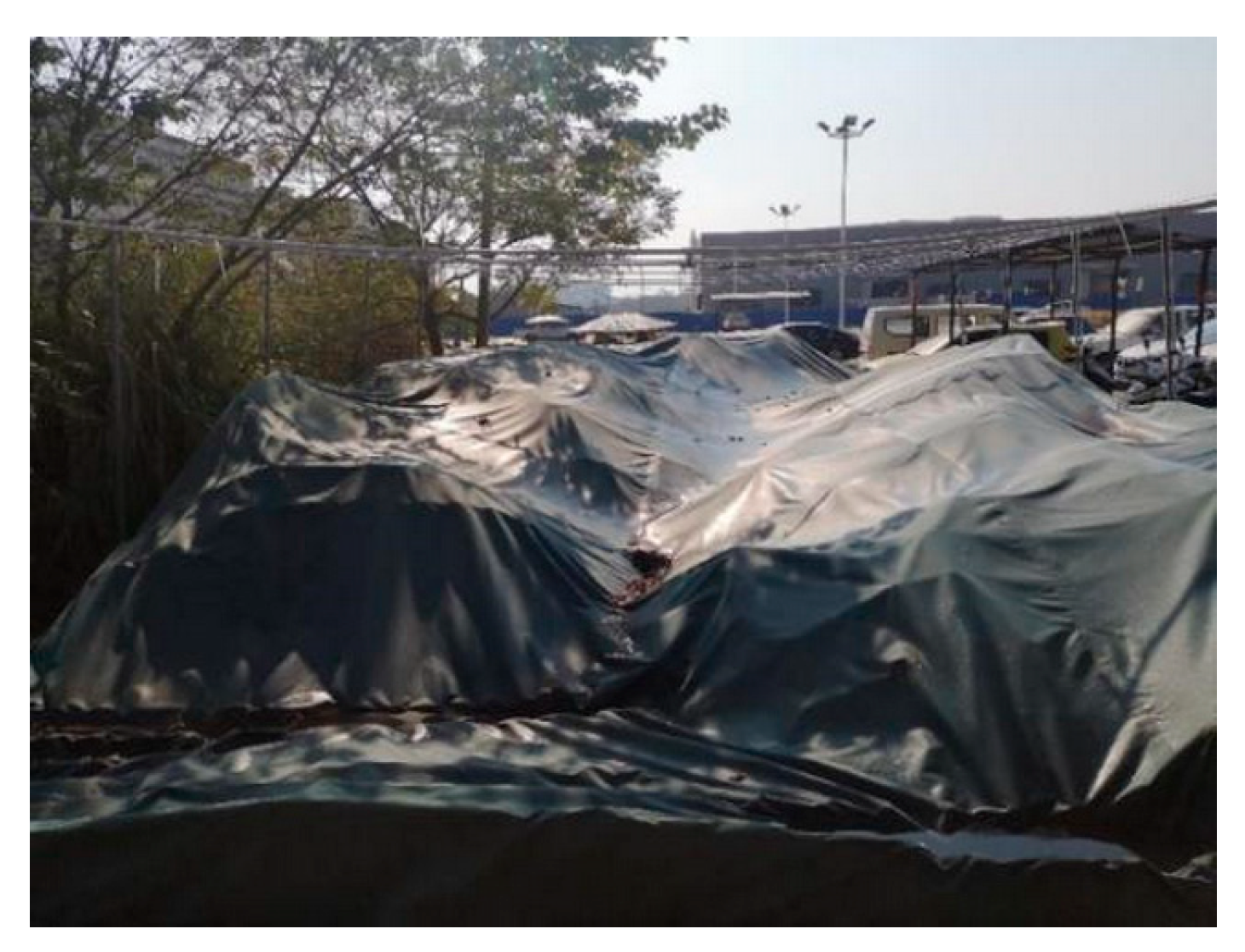
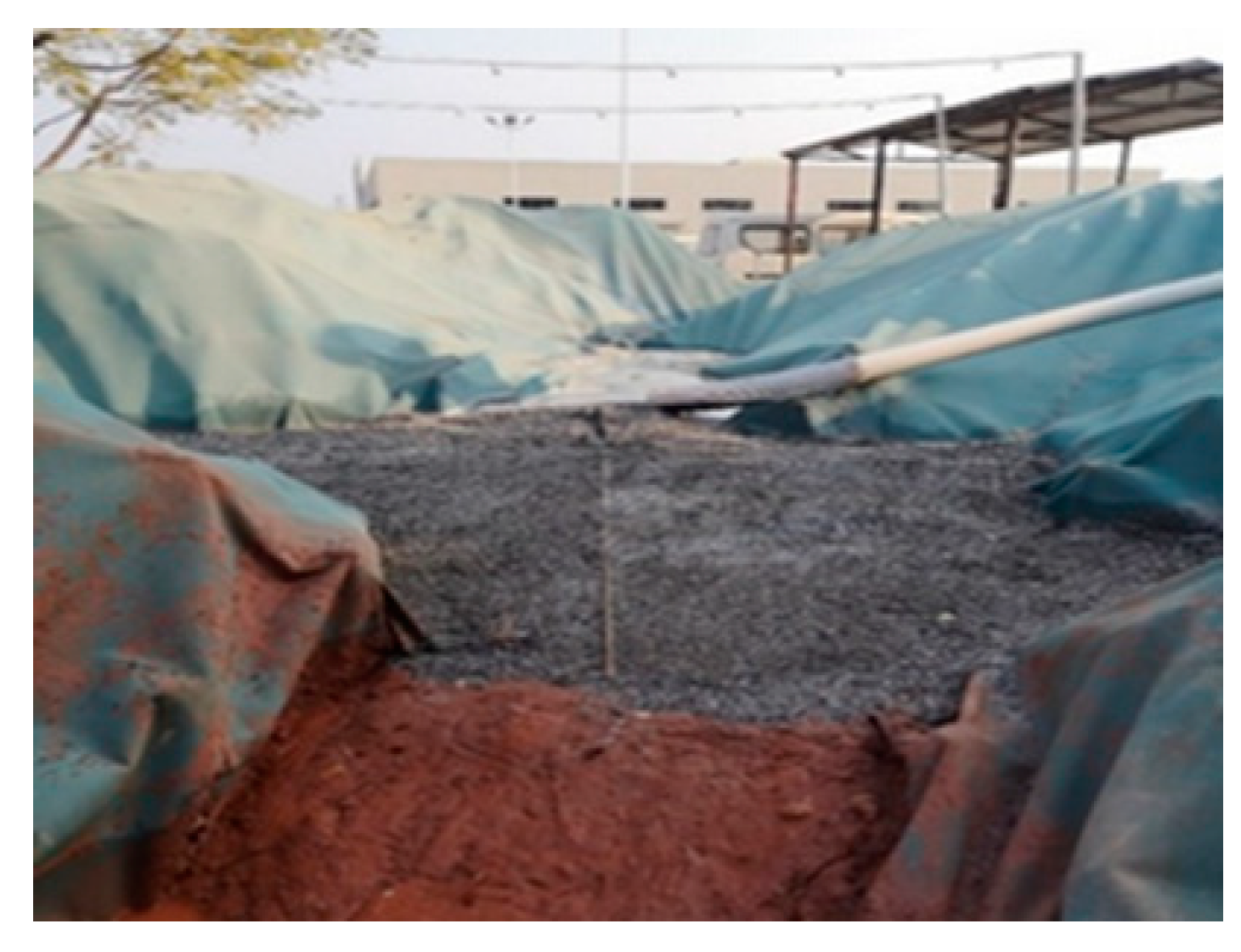
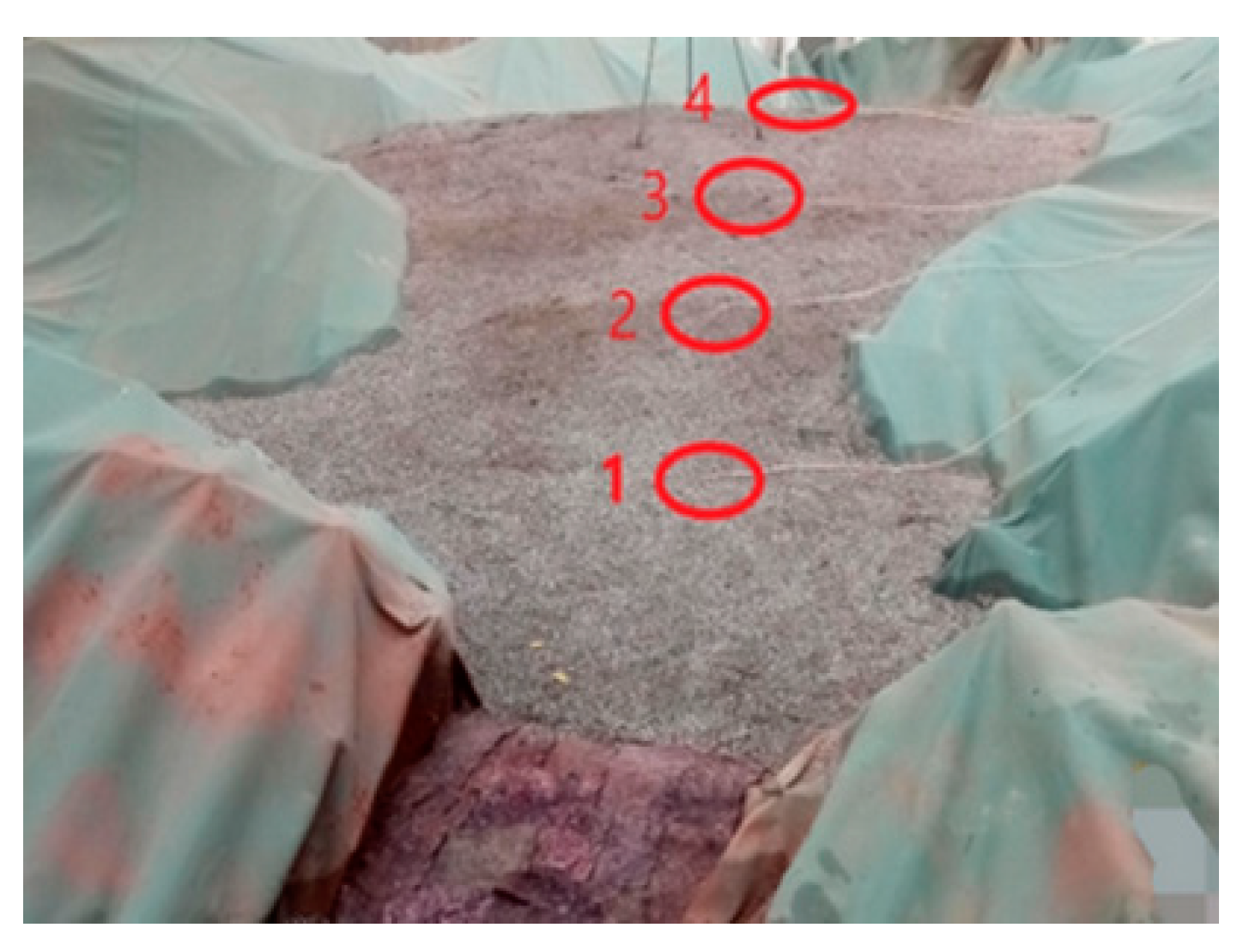
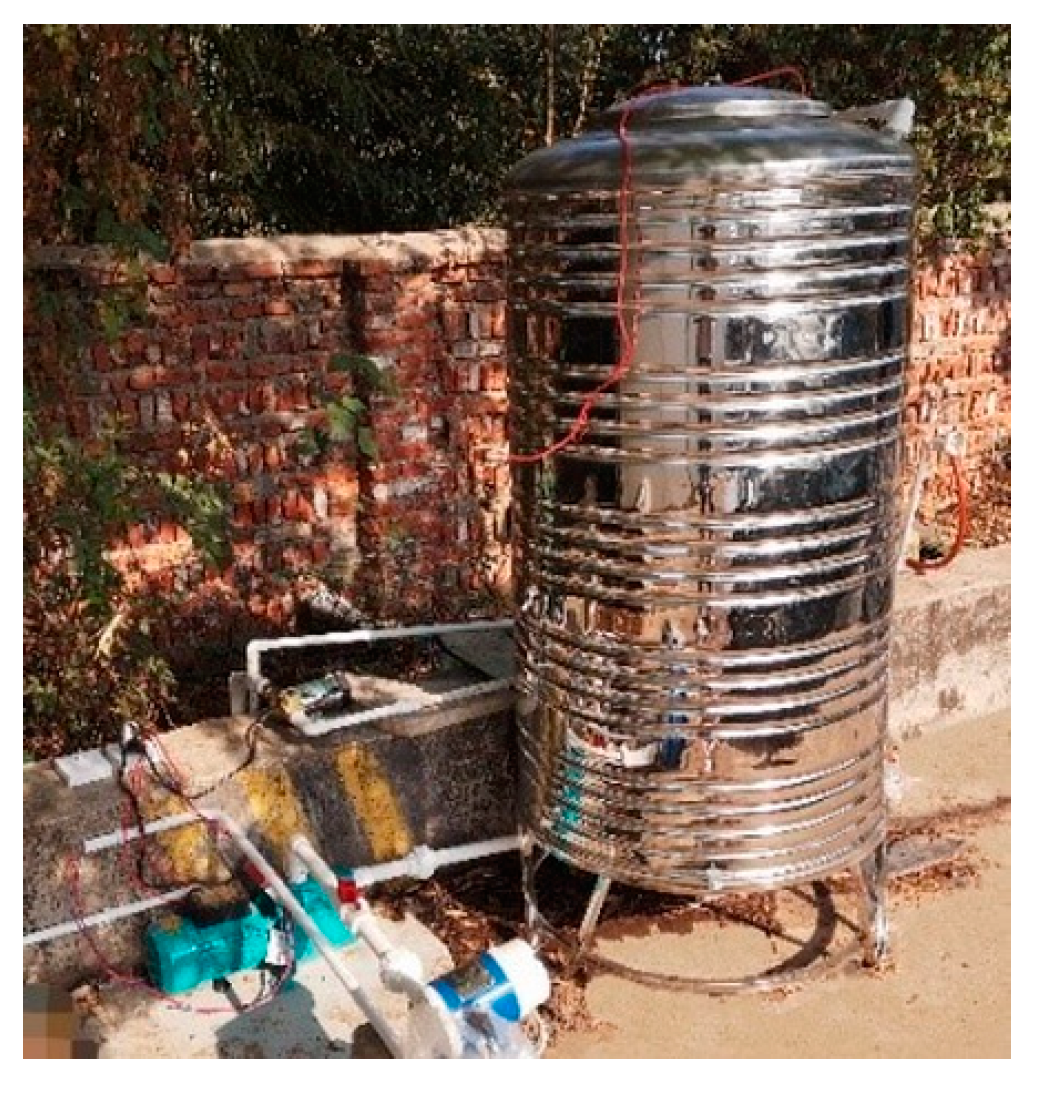
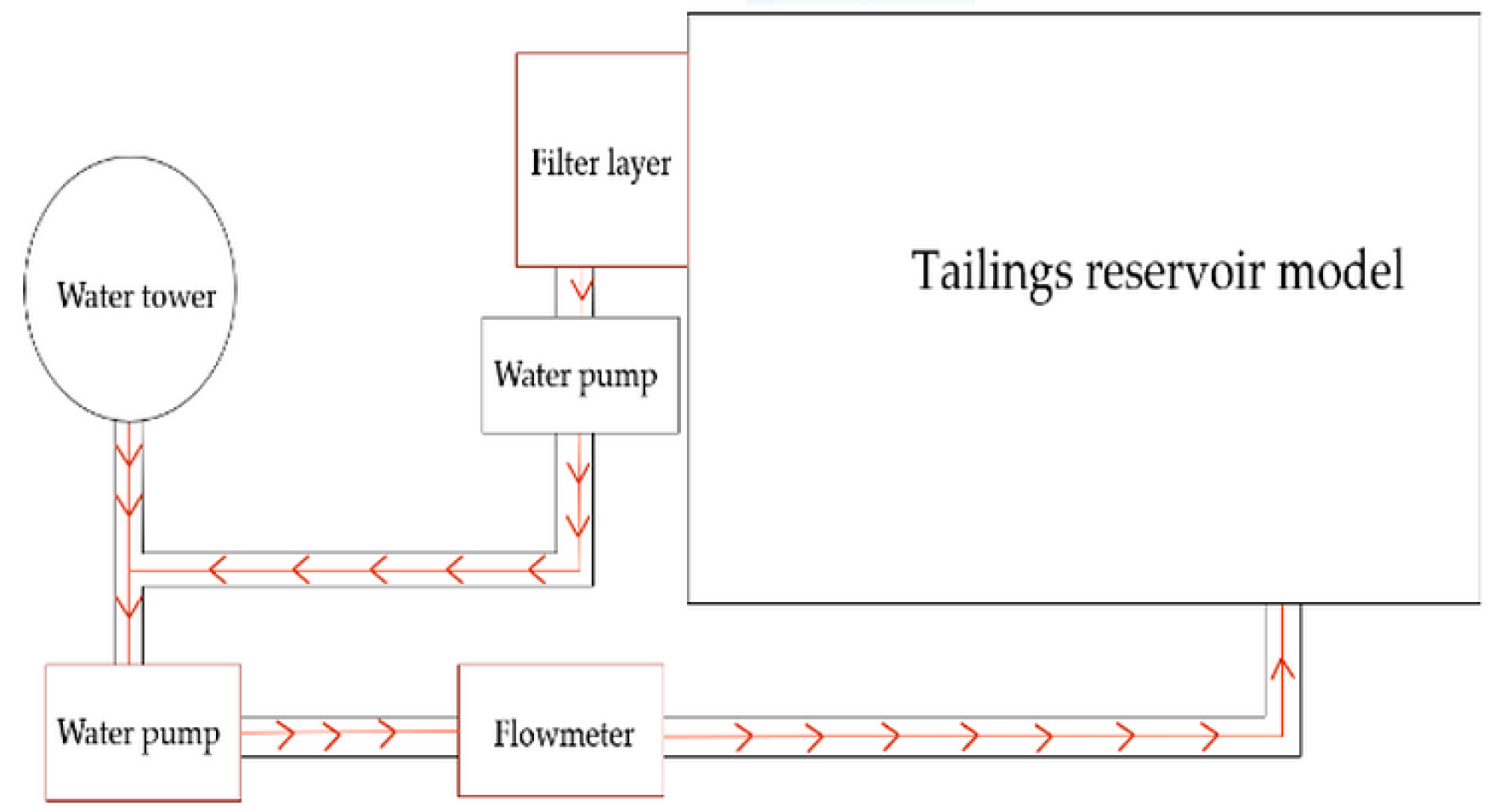
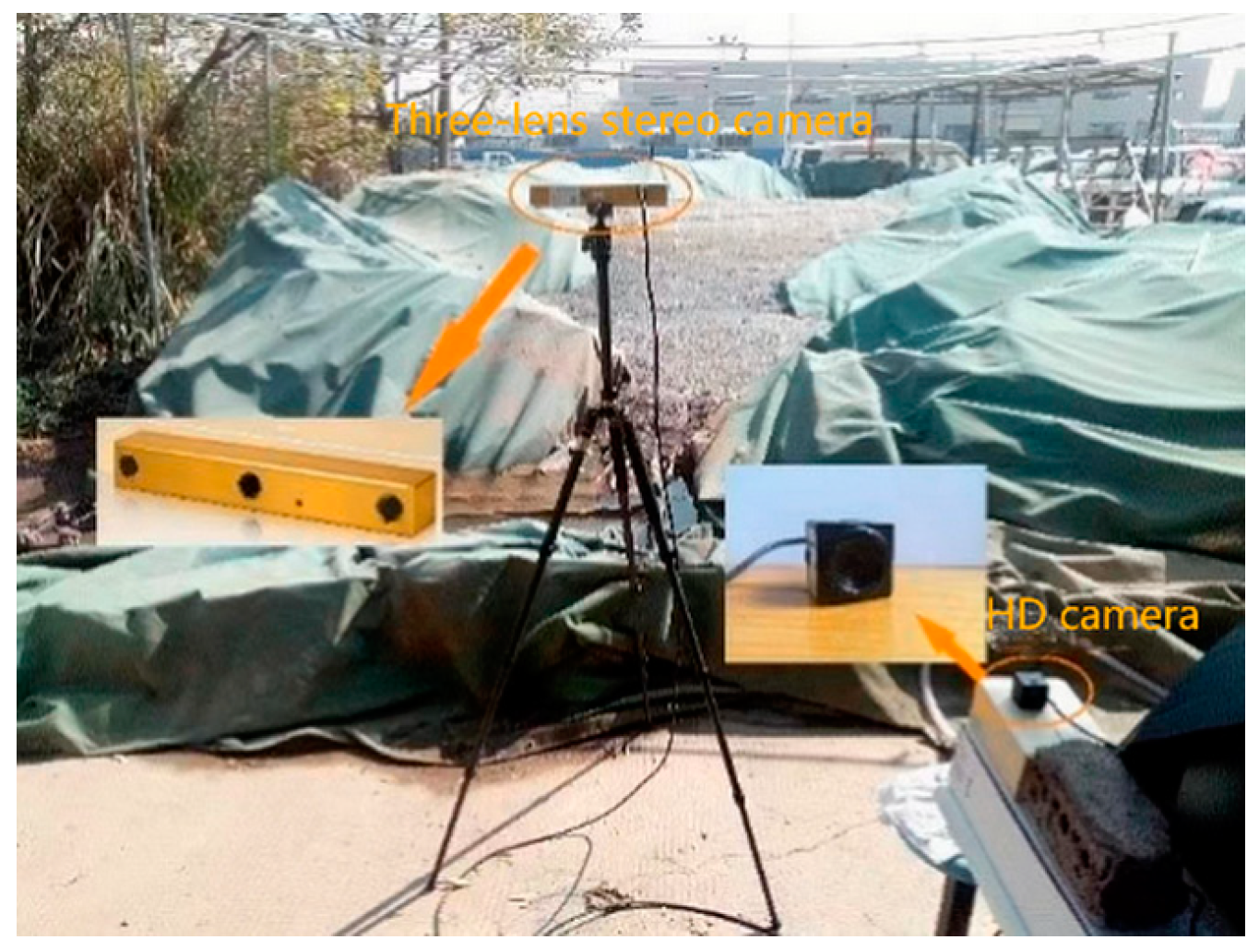



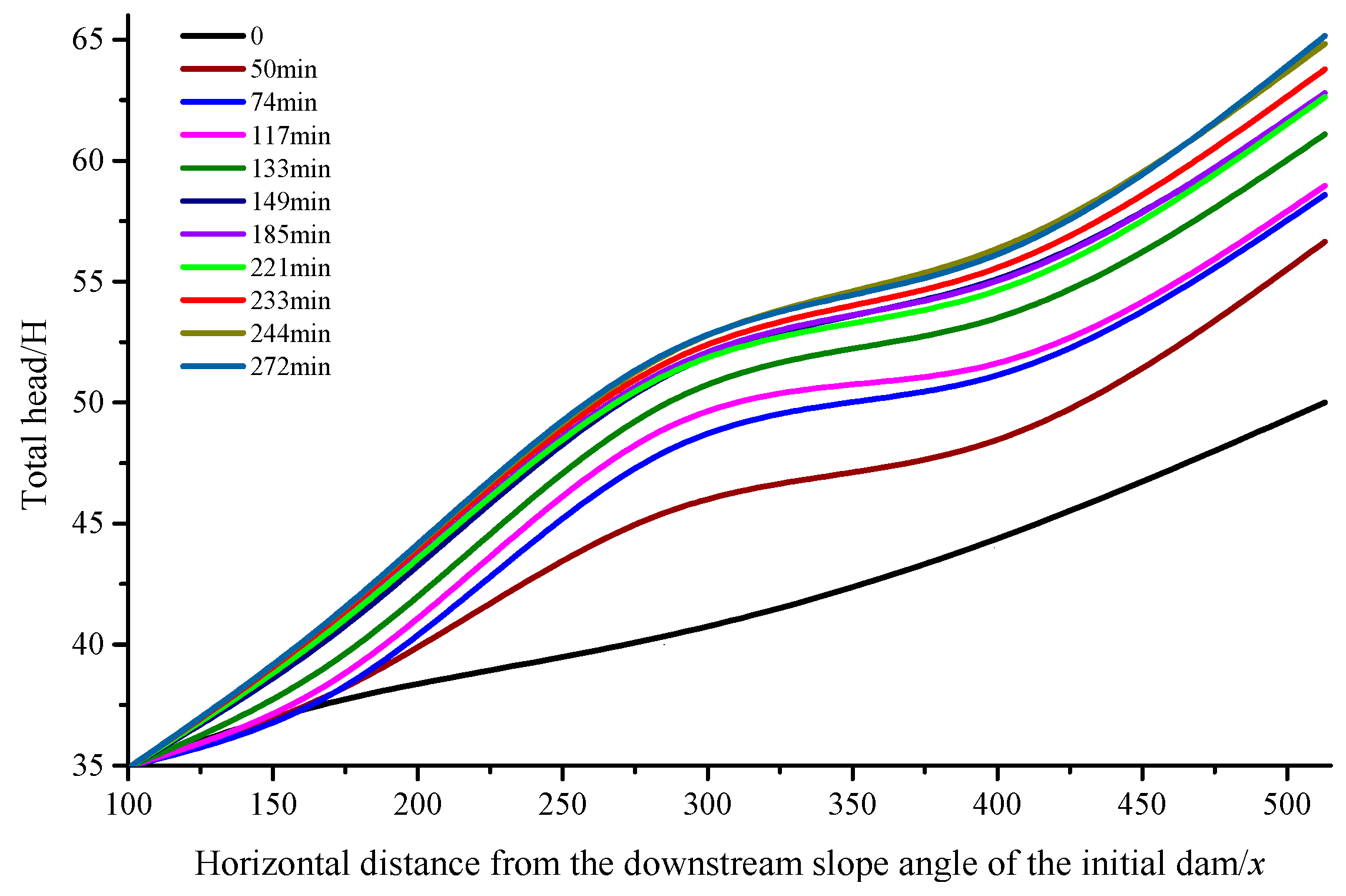

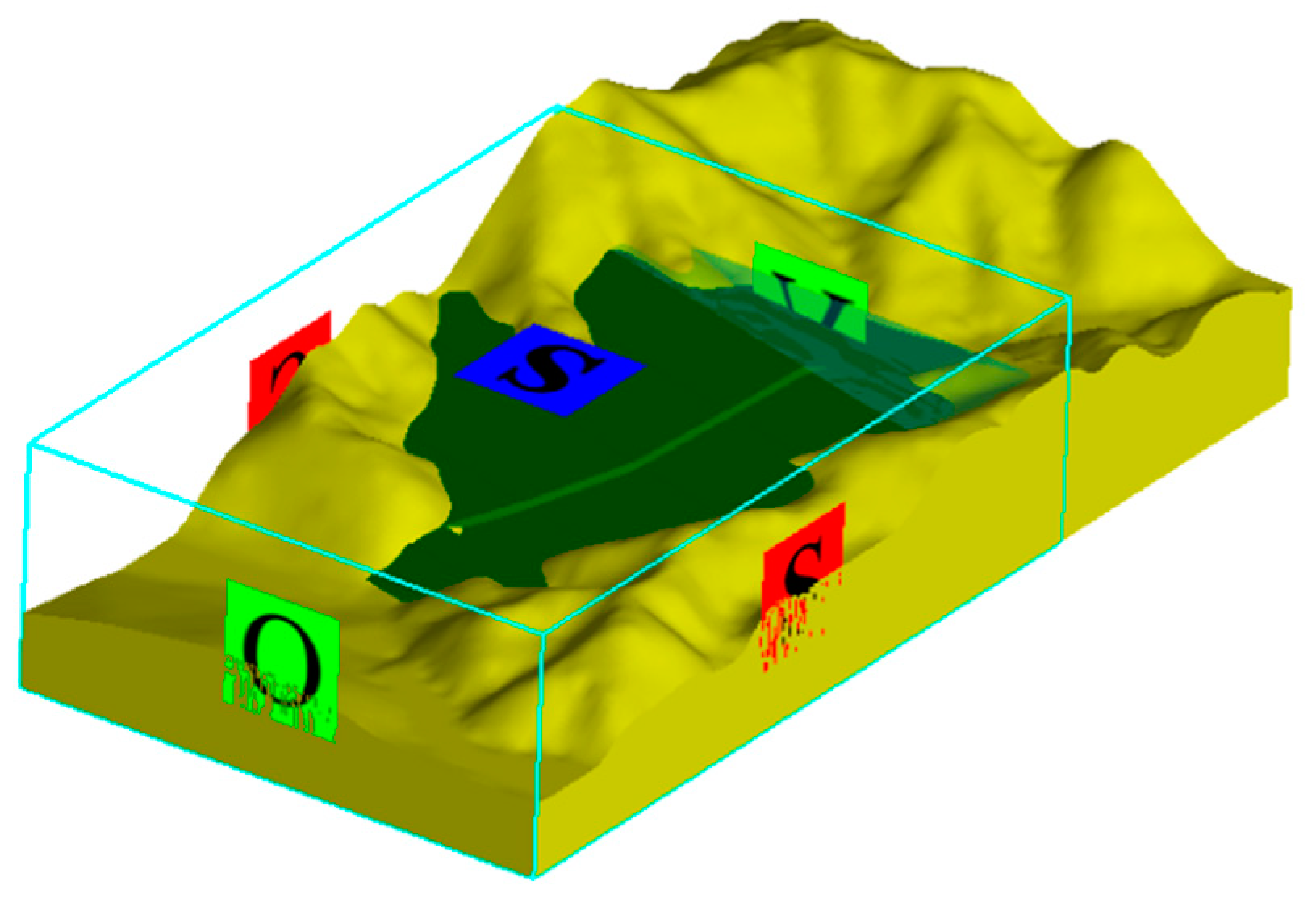
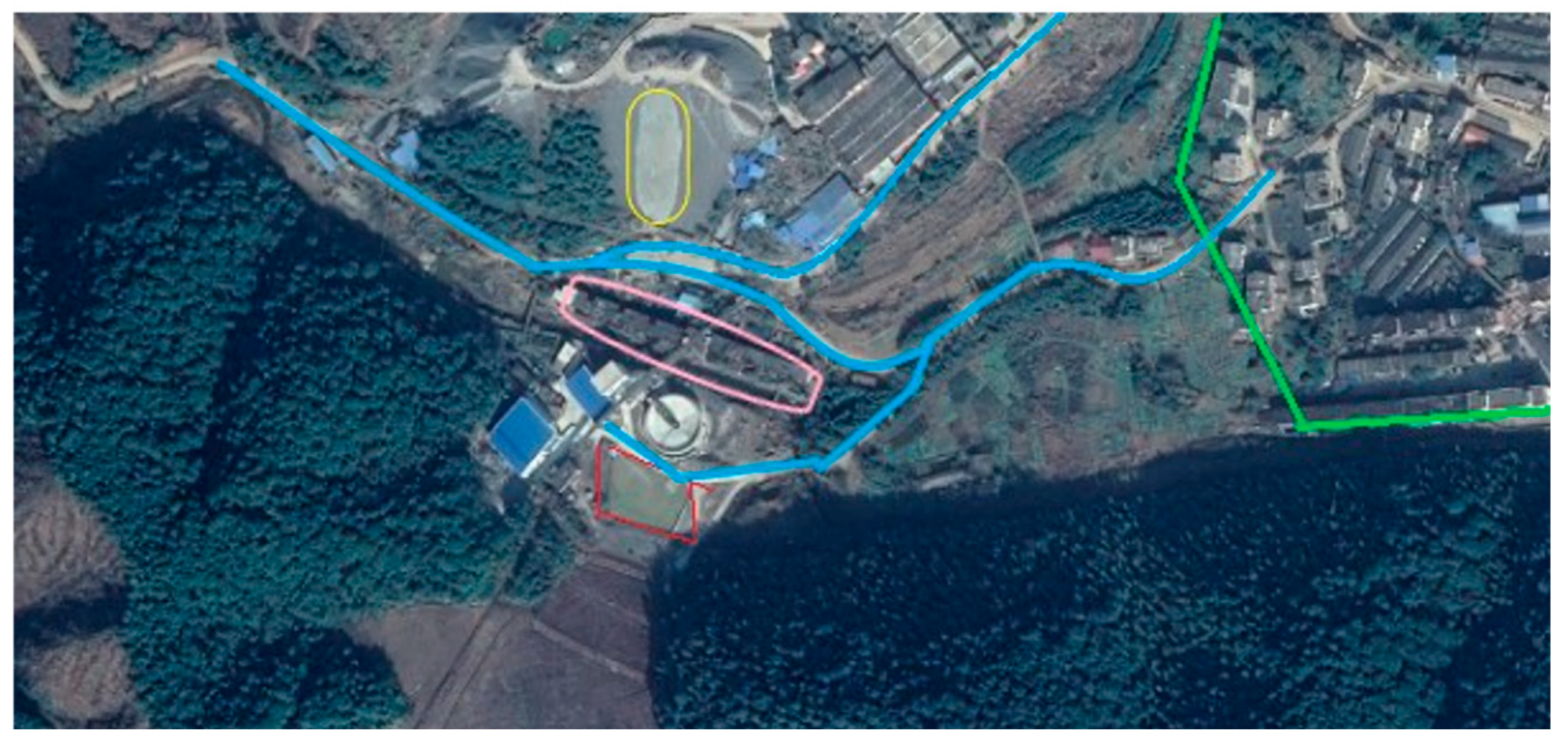


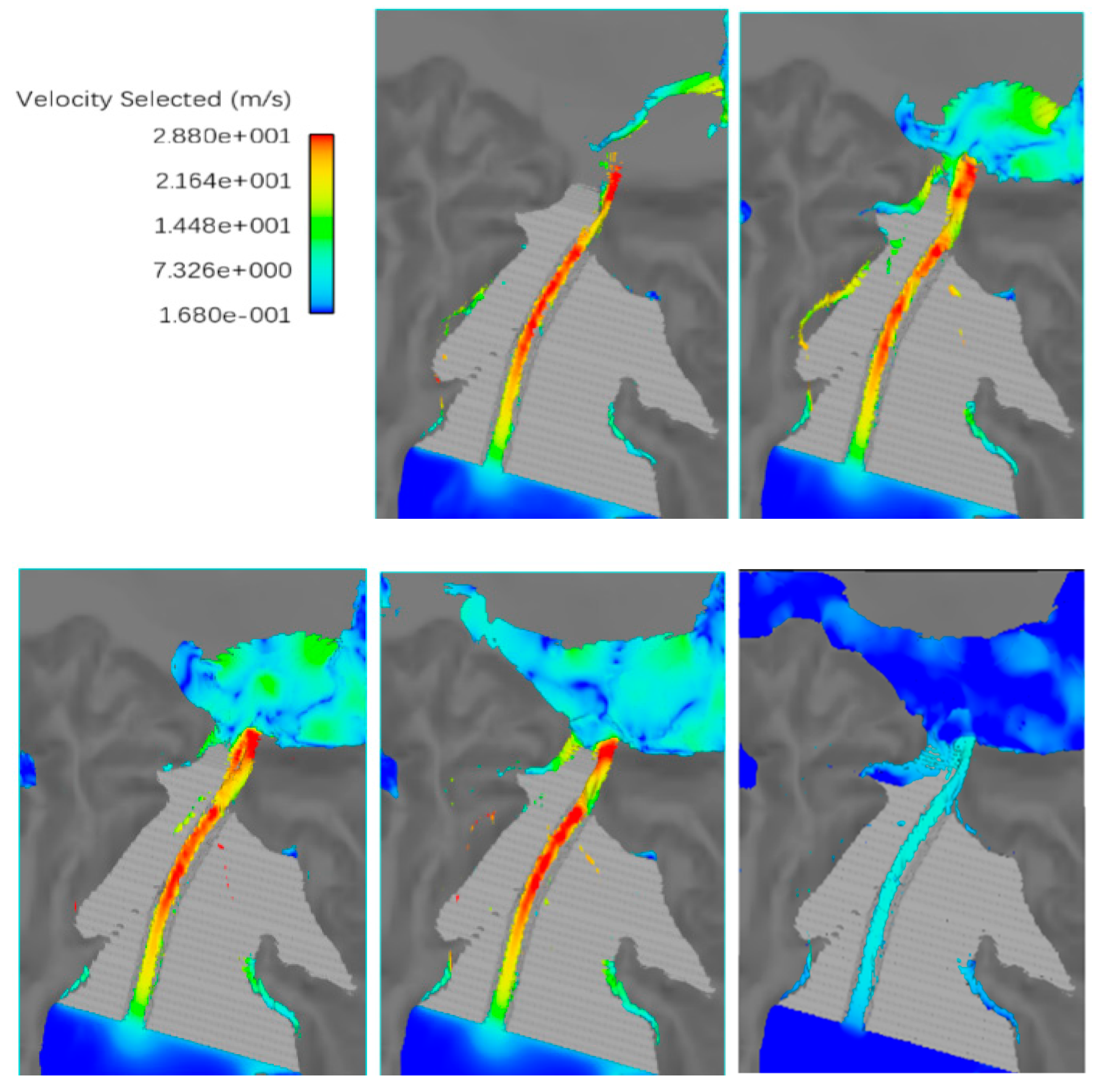
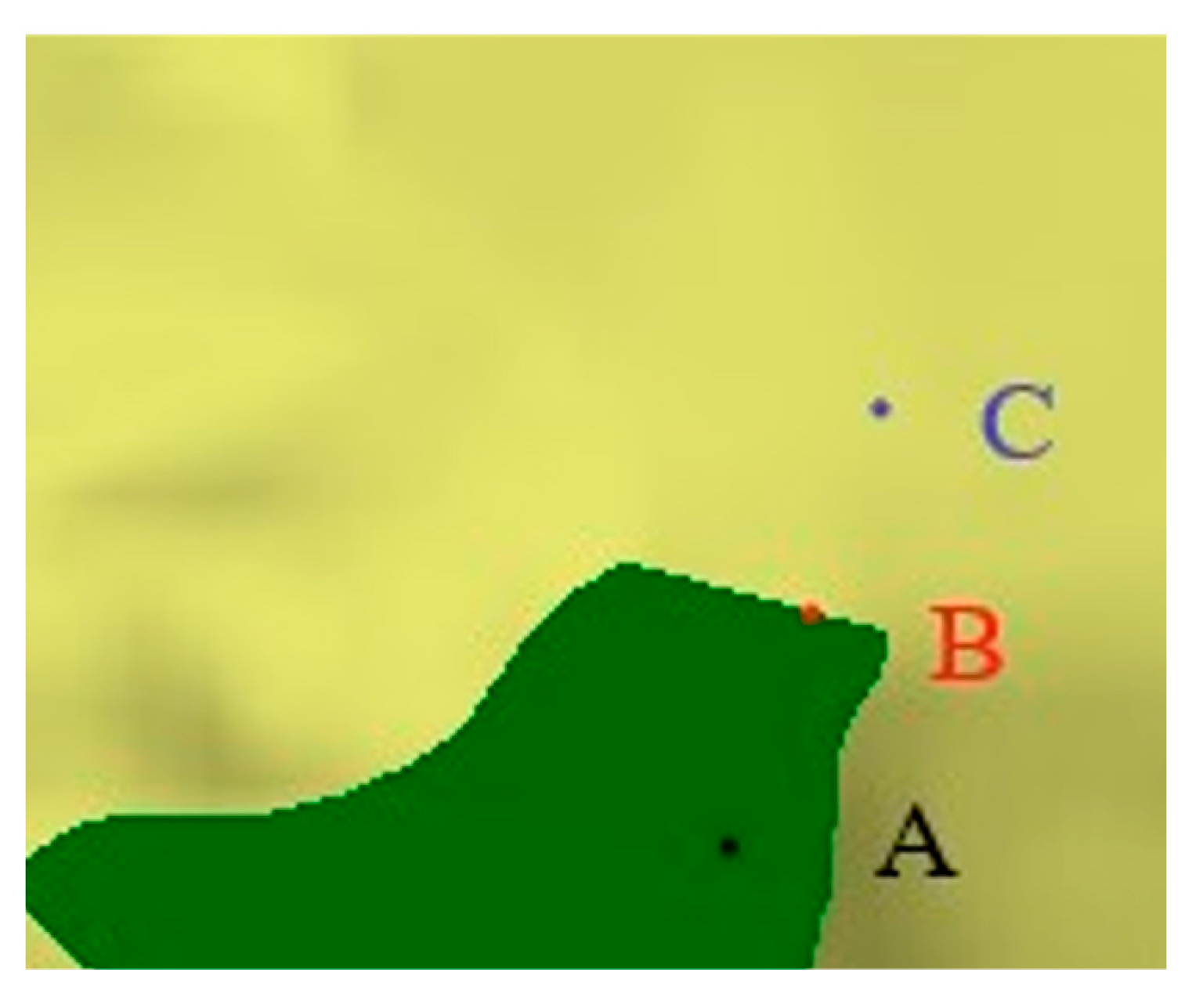
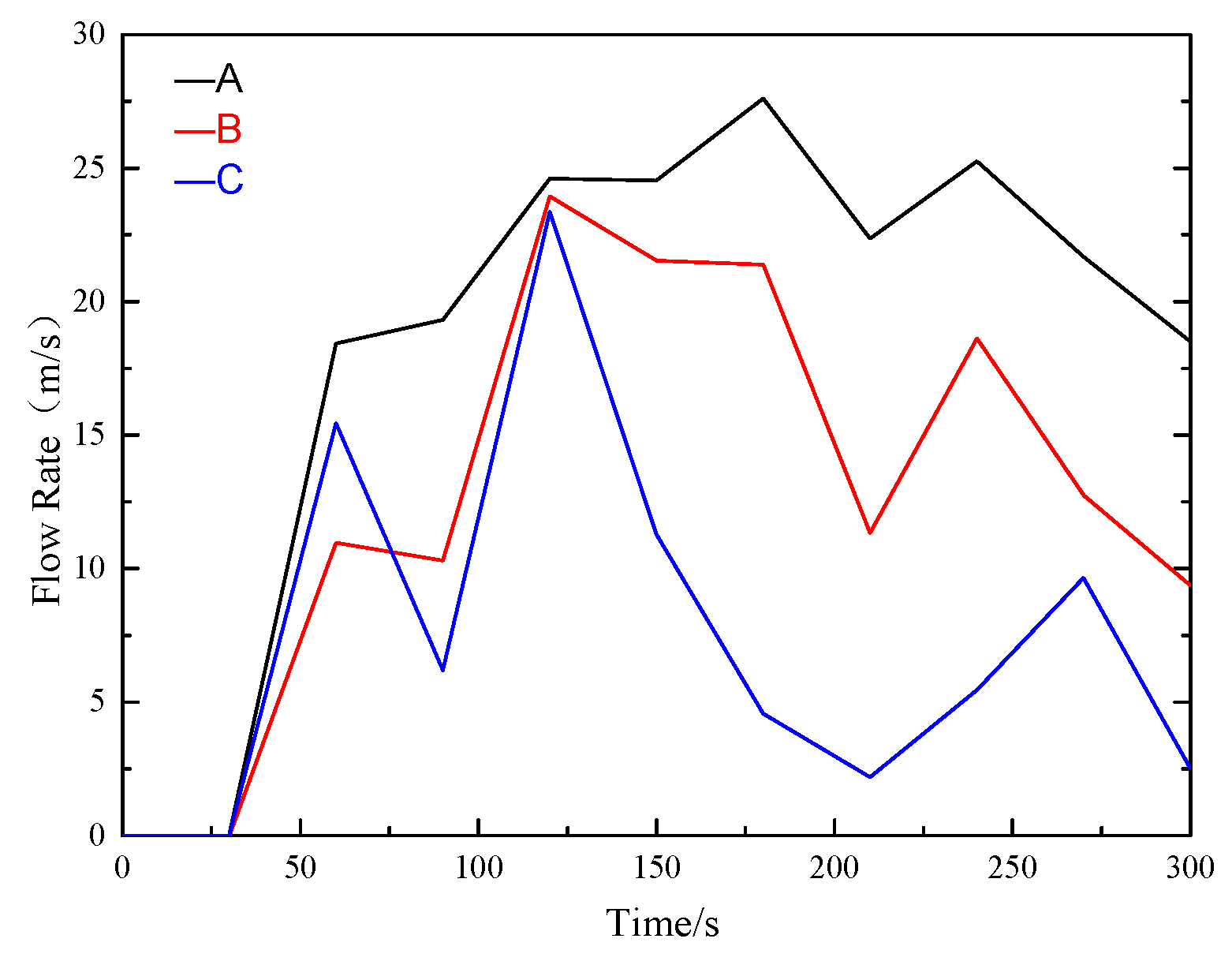
Disclaimer/Publisher’s Note: The statements, opinions and data contained in all publications are solely those of the individual author(s) and contributor(s) and not of MDPI and/or the editor(s). MDPI and/or the editor(s) disclaim responsibility for any injury to people or property resulting from any ideas, methods, instructions or products referred to in the content. |
© 2023 by the authors. Licensee MDPI, Basel, Switzerland. This article is an open access article distributed under the terms and conditions of the Creative Commons Attribution (CC BY) license (https://creativecommons.org/licenses/by/4.0/).
Share and Cite
Gao, Z.; Liu, J.; He, W.; Lu, B.; Wang, M.; Tang, Z. Study of a Tailings Dam Failure Pattern and Post-Failure Effects under Flooding Conditions. Water 2024, 16, 68. https://doi.org/10.3390/w16010068
Gao Z, Liu J, He W, Lu B, Wang M, Tang Z. Study of a Tailings Dam Failure Pattern and Post-Failure Effects under Flooding Conditions. Water. 2024; 16(1):68. https://doi.org/10.3390/w16010068
Chicago/Turabian StyleGao, Zhong, Jinpeng Liu, Wen He, Bokai Lu, Manman Wang, and Zikai Tang. 2024. "Study of a Tailings Dam Failure Pattern and Post-Failure Effects under Flooding Conditions" Water 16, no. 1: 68. https://doi.org/10.3390/w16010068
APA StyleGao, Z., Liu, J., He, W., Lu, B., Wang, M., & Tang, Z. (2024). Study of a Tailings Dam Failure Pattern and Post-Failure Effects under Flooding Conditions. Water, 16(1), 68. https://doi.org/10.3390/w16010068





